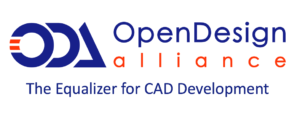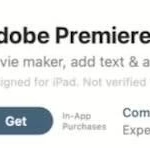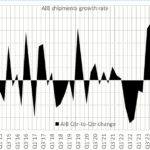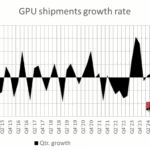The Open Design Alliance is a membership organization with a membership that includes well-known CAD companies such as
Bentley Systems, Dassault, Graebert, Hexagon (Intergraph/ Bricsys), Onshape, and ZWCAD among many others. Its technology enables drawing file exchange and also the development of add-on products for CAD programs. With a solid base and a growing engineering team, the group is looking at new opportunities.
 The Open Design Alliance has gone through a major transition as it expands to accommodate the varied requirements and interests of its broadening user base. Originally founded, with what now seems a fairly simple goal of making Autodesk’s proprietary DWG/DXF format available as data exchange to companies and customers outside of Autodesk, the ODA developed its own CAD engine allowing members to build their own CAD program, it has added an API for Revit add-ons, and it has expanded from there to become a development platform for its member companies.
The Open Design Alliance has gone through a major transition as it expands to accommodate the varied requirements and interests of its broadening user base. Originally founded, with what now seems a fairly simple goal of making Autodesk’s proprietary DWG/DXF format available as data exchange to companies and customers outside of Autodesk, the ODA developed its own CAD engine allowing members to build their own CAD program, it has added an API for Revit add-ons, and it has expanded from there to become a development platform for its member companies.
The ODA has 1200 member companies paying annual fees as high as $12,000 in some cases. There are also members who pay nothing, but they may have something to trade or can make their case for the value of their inclusion. In any case, Alliance has enough revenue to provide significant development support to its members. It has built a team of developers in Eastern Europe and the organization says they have over 80 engineers.
Most recently, the ODA has released new updates for its products, Visualize, Drawings, and Civil SDK and it gives us a chance to provide a little more detail.
Visualize
The DWG format still sits at the center of much of the ODA’s development, but one of its newest projects, Visualize, an SDK that enables users to build 3D viewers for DWG/DWF and all the other formats supported by the ODA including MicroStation’s DGN, RCS for Autodesk’s Recap, Collada DAE, OBJ, STL, and VSF (Visualize Stream Format). It also supports the major CAD engine kernel formats, ACIS and Parasolid. Revit support is available for an additional price. The group is working on the process/power/piping format, IFC is on the way and so is support for Autodesk Navisworks, which will also be available for an additional price.
The ODA also has a PDF publishing tool which enables content created in Visualize to be output and shared as PDFs and interactive PDFs.
In general, third-party viewers might sit outside a CAD application or they can be integrated, but they allow users to see a file, interact with it, mark it up, share it. It can be useful for users who don’t own the CAD tool which originally created the document and to exchange that information with others who may or may not be using that CAD tool. And, as you might expect there are lots of CAD file viewers available today. Autodesk’s licenses access to its drawing formats and provides several free viewers. There are free viewers available from vendors outside of Autodesk. And now, the ODA has entered the fray.
Does the world need another DWG viewer? Probably not. But the ODA is creating something different for its members whose products are primarily built around the DWG CAD drawing format in some way. ODA CEO Neil Peterson says members have asked for support for other formats but they want to bring it into DWG for exchange, comment, and collaboration.
The ODA is also bringing viewers up to date with support for applications in the cloud and implementing WebGL to enable visualization and interoperability in the cloud.
With the ability to bring combine formats and interact with those models, Visualize becomes something like Autodesk’s Navisworks or Bentley’s Navigator but based in DWG. It will need more format support along the way but the addition of IFC will bring it in line with the largest target market, Process & Power.
Visualize 2019.2 now has clash detection, which is especially used in piping applications, but also for AEC and any engineering process. It can be set to run on a static model to find all clashes and it can be associated with objects to detect clashes as objects are moved.
Other new features include:
- Partial view indexing to speed up the ability to visualize the large data sets typical of IFC and Revit files.
- New extensions for end-user applications including an interface to create navigation and markup tools.
- Export to DWG is standard for any format supported by Visualize.
- Subentity selection allows the selection and highlighting of items such as faces within meshes or shells.
- The new release also addresses member-reported issues and provides fixes.
Drawings
The ODA’s Drawings tool kit is the ODA’s original raison d’etre. It makes the world’s most widely used format for CAD drawings available in any program and as a result, DWG has become a common exchange platform for drawings. The ODA has evolved their original work to include enable editing, and custom objects resulting in an SDK that allows the development of tools to create DWGs (and other formats).
New features for Drawing 2019.2 include:
- Extrude and revolve to its 3D modeling capability as part of the standard SDK.
- Support for the integration of ACIS and C3D solid modelers.
- Basic 3D solids creation is available in the SDK at no additional cost.
- Faster visualization of RCS (Autodesk ReCap) point-cloud data through new LOD (level of detail) support.
The group has added new improvements for PDF import, improvements for incremental DWG saving, faster loading for DGN through support for multi-threading, and general fixes in response to member input.
Civil SDK
The ODA has developed a Civil SDK to allow interoperability with Autodesk’s Civil 3D files.
The latest release, Civil SDK 2019.2 adds reading, writing, and visualization of pressure networks in section and profile views including full support for part tables and catchment areas. The update also includes visualization of large TIN surfaces (MMS files) and fixes for reported issues.
Throughout these releases, the ODA has concentrated on improving visualization across a range of products and capabilities. As a result, competition is growing across the CAD competitive landscape.
What do we think?
DWG is forever. Even with the accelerating growth of 3D CAD, DWG remains a strong common format for design communication. Many people are trained and comfortable reading drawings; it’s pretty much required for manuals and books; it is an archival format–more to the point, DWG is a living format that is evolving with the applications that use it.
The development of tools that can mash-up content from different sources is sort of like software 2.0 in that it allows the development of new applications. For instance, Visualize can be used as the basis for building a configurator—adding on 3D models to develop a new product. It’s not unlike the rise of game engines we’ve seen that lets content be brought into a central program and output as an interactive application such as a game, training app, or interactive manual, etc. Visualize is more simple, but it’s headed in that direction.
There’s clearly more to come from the ODA.





